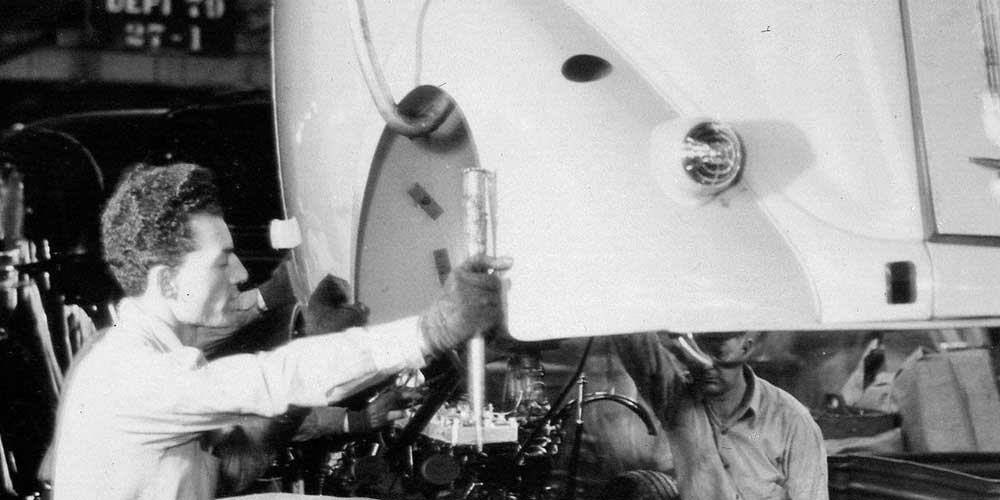by A. Wayne Ferens
Images from the Ferens Collection
Published 1.31.2024
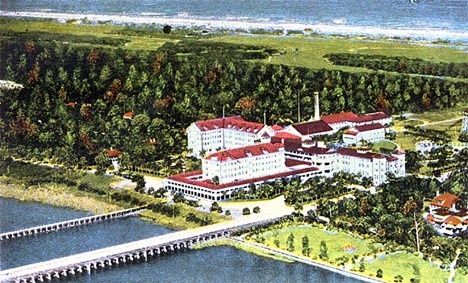 The Flagler Hotel
The Flagler Hotel
In the spring of 1889, the Florida East Coast Railway extended its service from Jacksonville to Daytona. The year before, the Ormond Hotel opened to the public. It was situated on a strip of land between the Atlantic Ocean and the Halifax River. Several years later, railroad magnate Henry Flagler purchased the property and would enlarge it from 75 guest rooms to 400. In time, it became known as the Flagler Hotel and was one of Flagler’s five exclusive hotels established along the east coast of Florida.
Flagler, to stimulate interest and promote tourism in the state, invited automakers to come to Florida and use the smooth, long, flat beaches along the Atlantic to develop, test and race their latest prototype motor cars. Then, of course, they could use his railroad to transport people, cars and equipment, then relax at their destination in his newly expanded Hotel Ormond.
In 1903, several manufacturers took Flagler up on the offer, and a speed tournament was established called the Hotel Ormond Challenge Cup. In early 1903, a one-mile race course was defined along the 500-foot wide, 27-mile long beach. On March 28, pioneer auto builder Alexander Winton, the largest automaker of the time, in his red Bullet #1 was pitted against a Ranson E. Olds car named the Pirate driven by engineer H. T. Thomas. Winton, in his heavier Bullet, barely won with a recorded time of 75 seconds or 48 mph, but the eventual winner was Ormond Beach and the famous cars that made racing history on its hard-packed sand race course.
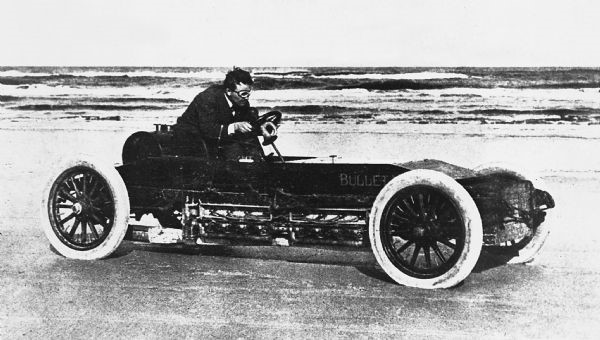 An Early Racer on Ormond Beach
An Early Racer on Ormond Beach
In 1904, Flagler’s East Coast Hotel Company built the Ormond Garage on the hotel property and was called Gasoline Alley. He ordered its construction to house at least 30 automobiles. In a few short years, the garage became the setting for the preparation, testing and servicing of some of the most famous racing cars in the world. Auto and motorcycle racers brought vehicles powered by gasoline, steam and electric engines from across the United States, as well as from France, Germany, Italy and England.
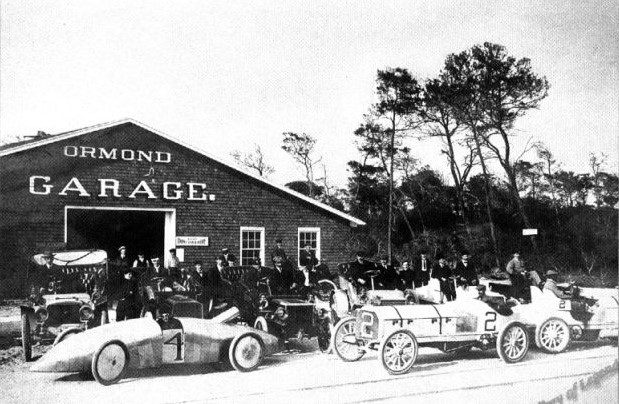 The Ormond Garage
The Ormond Garage
The large garage housed the drivers and mechanics during the speed time trials, while the owners and manufacturers stayed in the hotel. Record holders like Fred Marriott in a Stanley Steamer Rocket, the most aerodynamic racer of the day, set a speed record on the beach of 121.6 mph in the one-mile steam championship in 1906. On March 16, 1910, Barney Oldfield in his "Blitzen Benz," set the world speed record, driving 131.724 mph. On February 19, 1928, British racer Sir Malcolm Campbell set a new record of 206.956 mph in his streamlined Napier-Campbell Blue Bird. Other famous drivers broke world speed records at Ormond-Daytona were William K. Vanderbuilt Jr., Ralph DePalma, Arthur MacDonald and Tommy Milton.
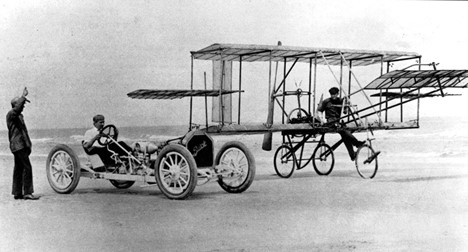 A race car and an airplane on the beach
A race car and an airplane on the beach
As the area grew in popularity, other events that included autos, motorcycles and even airplanes extended southward to Ormond's close neighbor, Daytona. The final land speed record set in Ormond-Daytona was 276.82 mph again by Campbell in 1935. That same year, the speed trials moved from the beaches of Ormond and Daytona to the salt flats of Bonneville, Utah.
It wasn't long before Bill France and others started oval racing on the beaches along Ormond-Daytona, beginning what later became NASCAR.
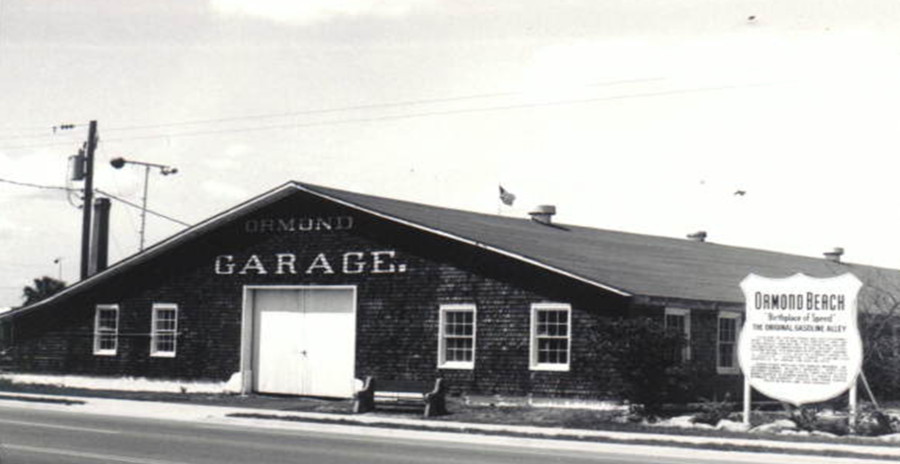 A later view of the Ormond Garage
A later view of the Ormond Garage
There is no mistaking Daytona Beach, and the famous Daytona International Speedway only miles away gets all the acclaim nowadays. However, there should be no forgetting those early manufacturers like Ford, Olds, Stutz, Fiat, Chevrolet, Stanley, Columbia, White, Mercedes-Benz and others who, in the spirit of competition, used “the beach” in the development of new automobile technologies. The Ormond Garage stayed at the center of racing for many years, later storing antique cars and racing memorabilia. Unfortunately, the old historic garage caught fire and totally burned down in 1976.
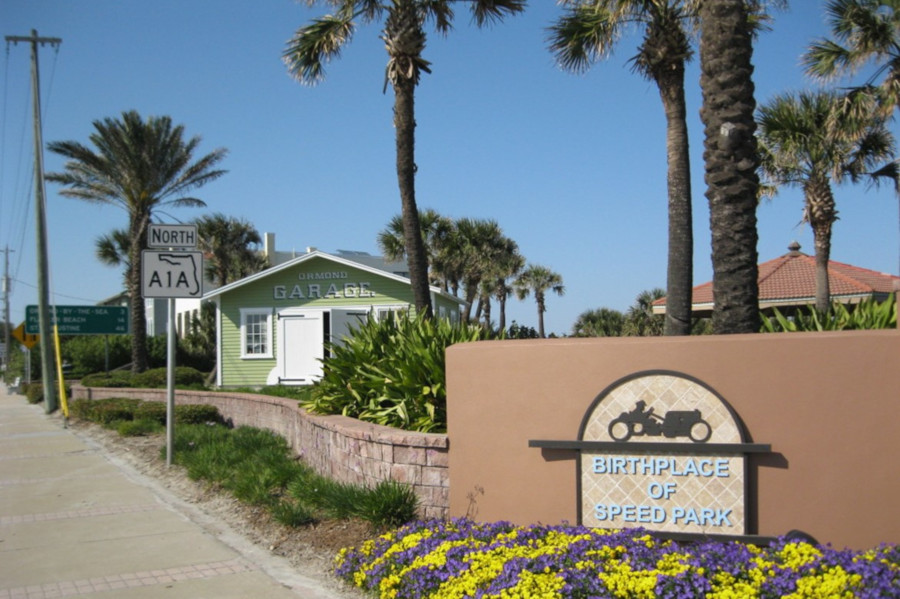 The Ormond Garage site today
The Ormond Garage site today
Today, the old beach racers are only commemorated at the Birthplace of Speed Park along Ormond Beach that displays a scaled down version of the old Ormond Garage, and a series of markers telling the story when racing was another day at the beach.


